MUSIC
A Folk Music of Sorts: An Interview with Zefan Sramek of Precipitation
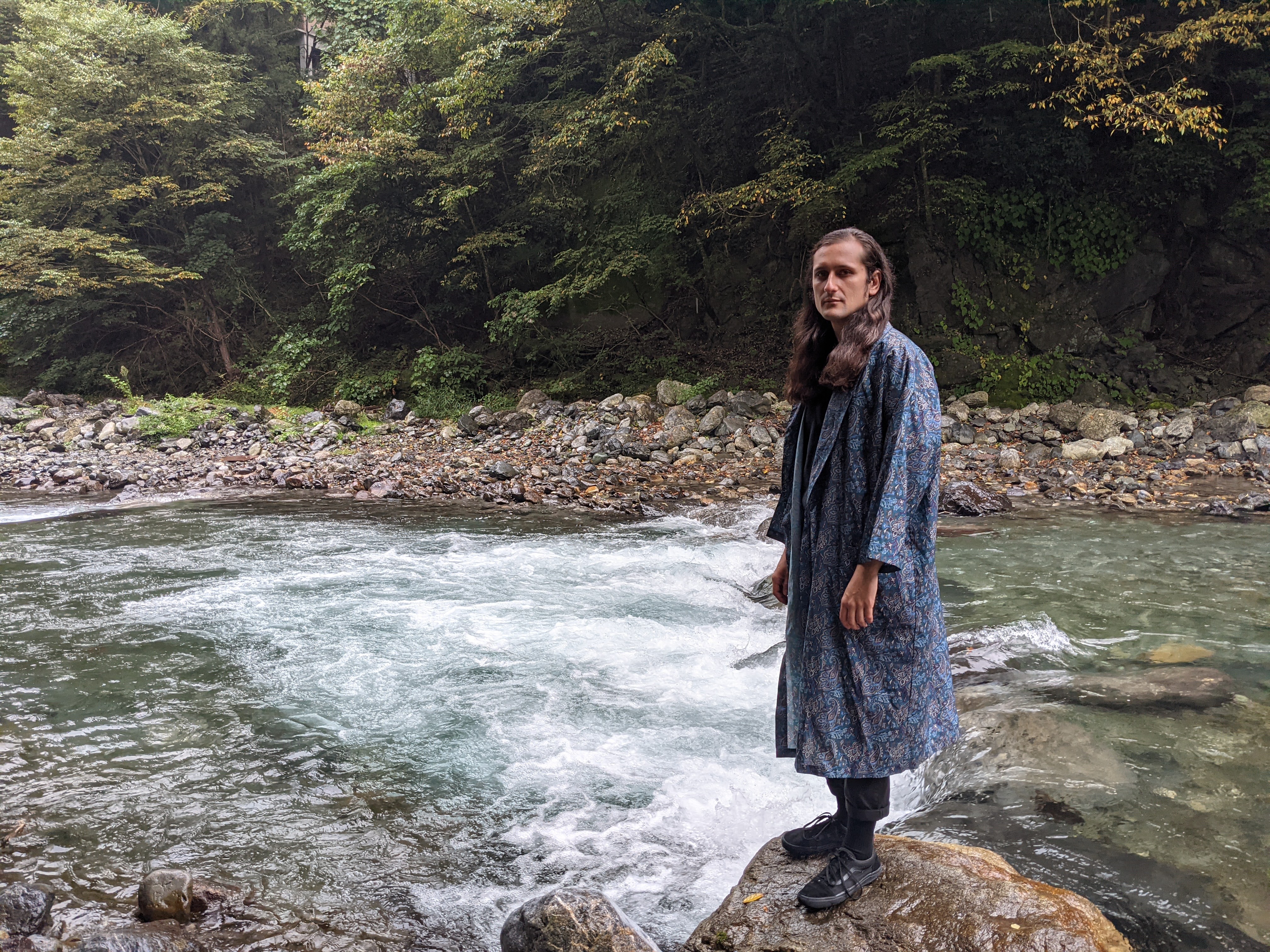
Interview by Jason Cabaniss ~ Originally published in Underscore Music Magazine: 16th August, 2022
Over the last decade, Zefan Sramek has released a slew of cassettes, CD-Rs, digital tracks, and vinyl under the Precipitation moniker. His blend of ambient, New Age, and techno is on full display on Glass Horizon, his latest release with 100% Silk. Dreamy keys, crisp percussion, and field recordings populate this vinyl set, which was inspired by Zefan’s trips to Japan’s Sado Island. Whether the track is seven minutes or sprawls over half an hour, or features deep house beats or formless ambience, Precipitation always hits you with a sense of contemplation, wonder, and melancholy. As 100% Silk writes, “This is dance music as portal and pilgrimage, spiral environments for a refracted age.”
In addition to his output as Precipitation, Zefan is a Ph. D. student at the University of Tokyo, studying Human-Computer Interaction and, as if that weren’t enough, running Umé Records. The label has put out his own work, as well as that of like-minded artists. With a summer packed full of Umé releases, as well as the late July release of Glass Horizon, Zefan and I exchanged emails to talk about Precipitation’s beginnings, how his academic career intersects with his music, and how his travels inspired his new LP.
JC: What are the origins of the Precipitation project?
ZS: In high school I was playing guitar with friends and taking cello lessons, and I found myself wanting to have a way of making music that was less constrained and bound up with technical skill, and more about expressivity and exploration. Around the same time I was getting really into both experimental, ambient, and noise records, and early Chicago house music. I quickly realised that there were sounds I couldn’t make with the instruments I was currently using, and became increasingly obsessed with synthesizers and electronic instruments, spending hours reading up on vintage synths and listening to demos on YouTube.
I was really lucky to grow up in a musically-inclined family, and my dad had a stash of various music gear he had acquired over the years, including a Roland TR-606 and an EDP Wasp synthesizer & Spider sequencer. I started spending hours tweaking and recording to tape, experimenting with ambient, noise, and rhythmic sounds, which eventually coalesced into the Precipitation project. I made several albums using a combination of free plugins, Casio keyboard, effects pedals, TR-606, and Wasp, playing live over drum and synth loops.
A break-through came once I saved up and bought a Roland JX-3P and Alesis MMT-8 sequencer. This led to the album Late Arrival, which I self-released on CD in my last year of high school. But this was actually the fourth album I did as Precipitation. For the real heads, you can hear an even earlier Precipitation release here.
Your website says you’re a Ph. D. candidate at the University of Tokyo. How do your research interests intersect with the music you make as Precipitation?
I'm currently in the first year of my Ph. D. in electrical engineering, but the specific focus of my research lab, the Interactive Intelligent Systems Lab, is in Human-Computer Interaction (HCI). HCI, broadly speaking, is concerned with studying the ways people adopt and use technology and then investigating how we can harness or adapt said technology to better fit people's needs or allow them to interact in new, more beneficial ways. Even though HCI is generally considered an engineering or computer science discipline, it is much more focussed on people’s experiences with technology, which was one of the things that drew me to the field.
Before starting my Phd, I also completed my master's degree at the University of Tokyo, and my thesis was about timbre exploration support for synthesizers. Along with the music I make as Precipitation, I've always been interested in electronic instruments and gear, so it felt natural to bring my experience and interest to my research. One thing I've noticed is that synthesizer interfaces basically haven't changed much at all in the last 50 years. We have standard knob-per-function synths, and then synths where you have to menu-dive for each parameter, and various things in between, but the fundamental problem that most synths can make way more sounds than a single person can ever effectively explore hasn't really been addressed in any meaningful way. For my research, I began by interviewing a number of my friends and acquaintances who use synths in their sound creation process, and based on those results developed a prototype interface for timbre exploration that uses things like patch morphing and interactive patch evolution to allow you to explore sounds more easily. We're currently working on a paper submission based on the project that will hopefully be out next year. My recent album Falling, I Thought I Caught A Glimpse of Paradise features a bunch of sounds made with the prototype I developed. You can see more information on my website.
My PhD research, though, is in a different direction, and I'm currently investigating the relationship between social media use and mental well-being. But this project is still in its early stages.
100% Silk describes Glass Horizon as being “Conceived and recorded between two formative trips to Sado Island.” How did the trips inspire the sounds and vibe of the record?
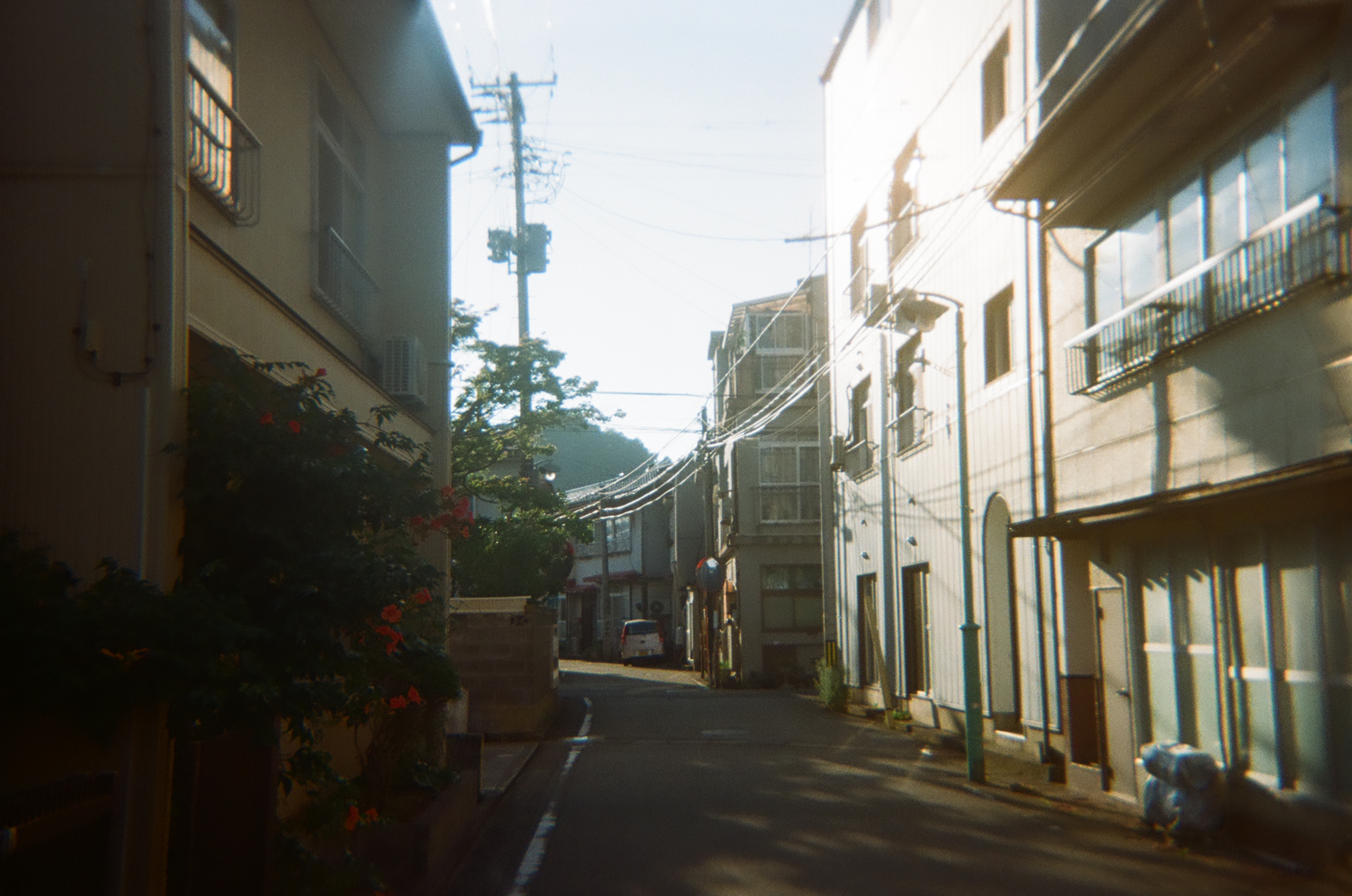
Sado Island is a large island located about 35 kilometres off the coast of Niigata Prefecture that was famous for gold mining, and even farther back, as a location for sending political exiles. The gold mine closed at the end of the 1980's, which I imagine was the end of the island’s one major industry. When I first visited I expected such a large island so close to the mainland to be a major tourist destination, but instead found a series of dusty towns seemingly nearly devoid of inhabitants, and desolate coastlines casting rocky outcroppings into the ocean. As a result, the island took on a different character for me, more as a location of escape or retreat, and I returned in August of 2020 and spent a week sleeping out in a hammock on various beaches and wandering between the island's varied environments. Like many parts of rural Japan, Sado leaves you with an impression like that of a faded photograph. Clues from a more vibrant era poke through layers of dust and out from behind faded signboards, giving you a sense that you’re visiting a relic of a lost past. And yet the natural environment is absolutely sparkling and beautiful.
The title of the album comes from the look of the ocean as the sun is setting - the exact moment when the water's surface turns completely smooth and reflective, like a sea of glass. And of course there are all the field recordings on the record, which I did while I was there. But, beyond that, my music often comes to represent certain things to me, even after I've worked on it, and listening to demos from the early sessions that lead to the album while travelling imbued them with the energy of the island for me. Getting back to the studio, I brought back not only the field recordings, but also the images of the landscape, and that all further informed the development of the album.
For much of my work, both musical and otherwise, the notion of place is very important. That's one of the reasons I like using field recordings. Of course, a wave sounds like a wave more or less no matter where you are, but the fact that these specific waves were recorded at a certain time and place means I had to be there at that time to record them. In this way the recording, much like a photograph, functions like a record not only of a sound, but of where one has been. It somehow grounds my existence in time and space, if only for a period of several minutes.
The sounds of Precipitation have veered between ambient, techno, and New Age, oftentimes blending all of those elements into one piece. When you’re putting a song together, do you have a direction in mind or do you rely on wherever your mood or subconscious takes you?
The direction I've decided to take for a track or project has really depended on my feelings at the time. Sometimes I have a concept or certain sound in mind, and then I pursue that more specifically through my production choices. But often the inspiration or starting point for a track is much more intangible and elusive, like a certain feeling, image, or memory - things that don't clearly translate into a certain synth patch or drum pattern. In that case I just let things come out as they do. My process is generally quite spontaneous and improvisational, so I can lean into that. For Glass Horizon, it was part of an ongoing project to combine the sounds of New Age and house music, and was inspired by specific scenery and locations, so there was definitely more deliberate sound design to that end. But I find it can also be stifling to always feel the need to start from a specific concept or idea, so lately I've been enjoying just getting in the studio and letting things take shape without too much forethought.
You’re currently based in Tokyo. What is the underground/DIY music scene like? Have there been opportunities to put together shows there?
The music scene in Tokyo is very diverse and inspiring. With the density of the population, there's really an endless number of intertwined scenes spanning many different genres, which also means that there are lots of venues of different sizes keeping space available for the underground. This makes it possible to experiment with different formats of live events, without worrying about needing to draw a huge crowd. And there will always be some heads coming out. I feel really grateful to have been welcomed very warmly by all the people I've met here. It's a common stereotype that Japanese people can be cold or stand-offish, which can be true in some cases, but I've found the music scene to be the total opposite, so I've had the opportunity to connect with a lot of like-minded people. I owe a lot to Chiyori and Yamaan who are great friends and have introduced me to lots of amazing people.
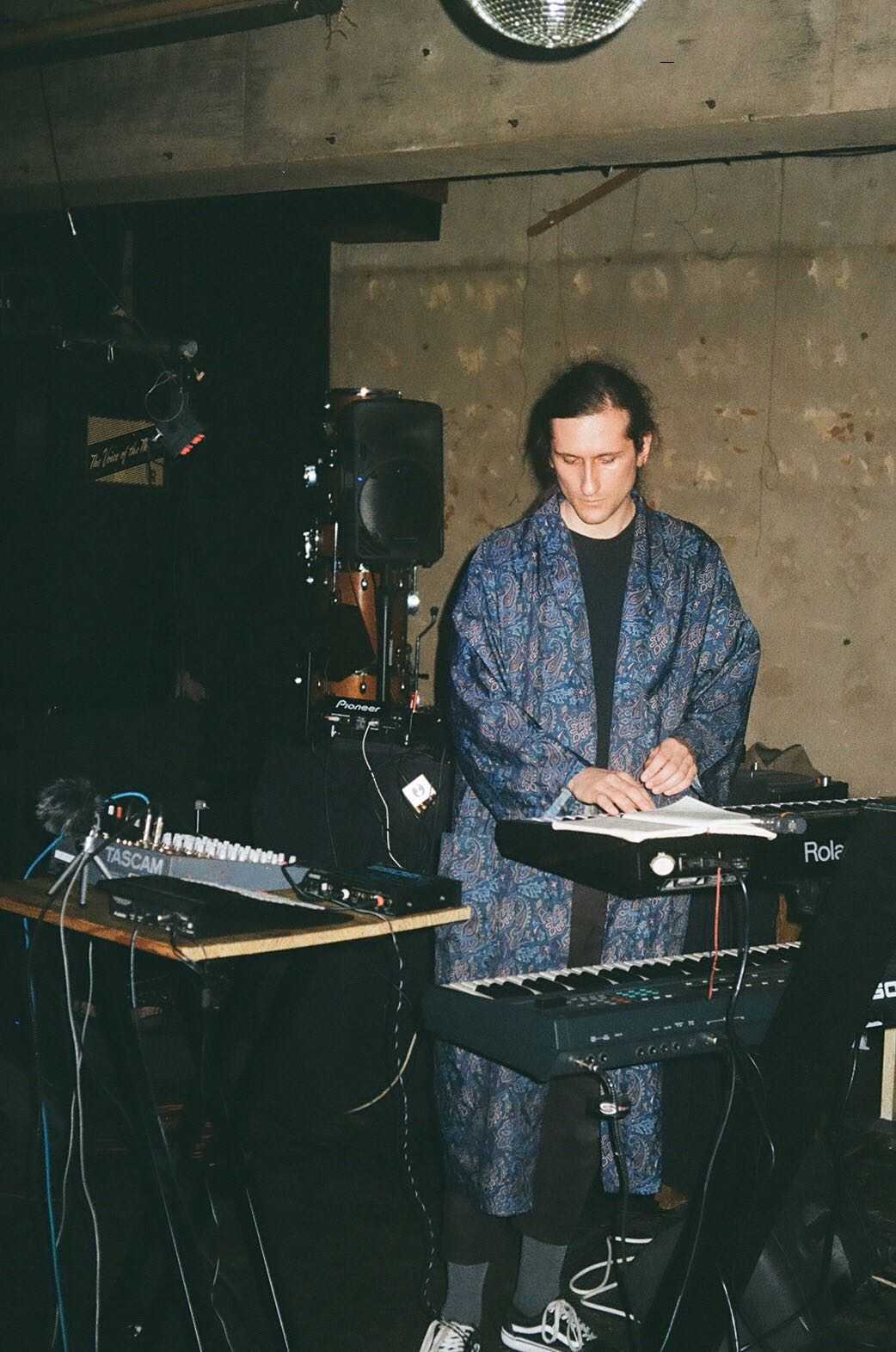
Here I've been able to play shows regularly, at least as much as was possible throughout the pandemic, and organize a few events as well. The most recent was the release party for my 12" 'Warm Embrace', together with a wicked group of artists, including friend and fellow SILK associate Soshi Takeda. This was the biggest show I've ever organized and it was actually pretty stressful, but there was a good turn-out and people had a good time, so I was really happy with how it worked out.
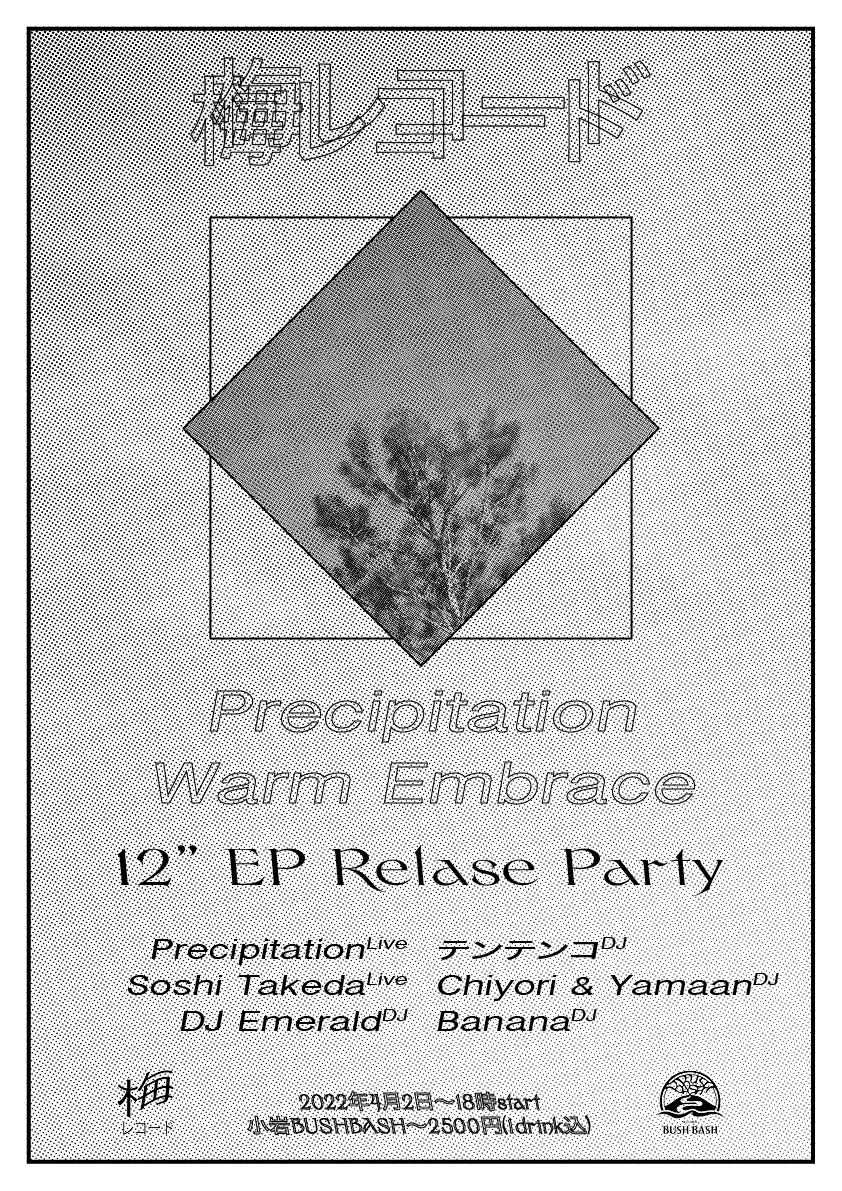
Recently I've been working on a new collaborative project with my friend Kazuki Ishiuchi called フォレスト電流 / Forest Denryu. We do totally live improvised electronics and have recently been playing shows around Tokyo. The project has also been an opportunity to experiment with my own custom gear, including the prototype I built as part of my research and the modular synth I've been designing. We just had the opportunity to play a show with jazz pianist Hiroshi Minami, which was very special.
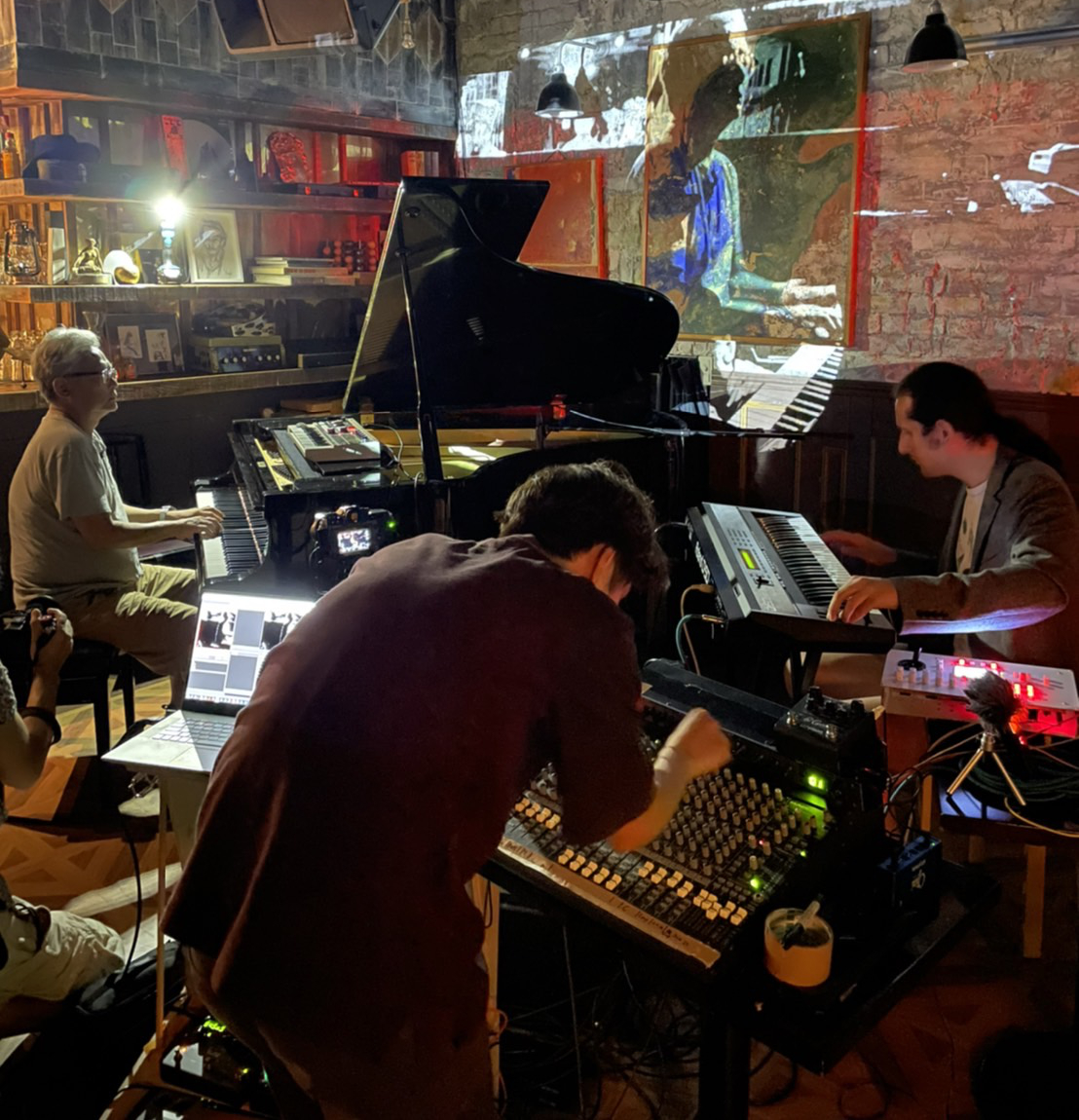
I've also been really happy to be able to work with several independent record stores in Tokyo, including Takuro Higuchi's Dotei Records and H. Takahashi's Kankyo Records, who very kindly stock tapes from Umé Records, my ambient tape label.
Beyond the music scene though, Tokyo is also just a really inspiring city to live in. The density and the layers of history all piled up and mixed together has resulted in a landscape rich in detail that one can slowly come to understand through careful observation and contemplation. It can be oppressively urban, but also quiet and serene. Despite not being all that large in terms of geographical area, the city is made up of all these diverse areas and neighbourhoods, with different scenes and vibes. Exploring the city on my bicycle, I'm constantly finding inspiration in new details. It's really quite an astounding place to live.
As much as there has been a resurgence of older music from Japan recently, there is lots of amazing music being made here now that I urge people to check out. Shout outs to: Iu Takahashi, Yu Ogu, Metoronori, Y. Ohashi, Sachi Kobayashi, tatata5, Tentenko, Banana, Aquarium, Mahal, Soloi Sounds, DJ Emerald, 舞桜, Tentative Four, Takao, and all the other amazing people I've performed or worked with in this city so far.
You run Umé Recordings, which describes itself as “inspired by New Age imagery, Japanese Environmental Music, and a new spirituality rooted in specific times and places.” What inspired you to start the label?
The initial seeds for the label were planted around the time of the release of my Wakkanai Pilgrimage album. That project was the start of this idea of finding one's own sense of spirituality rooted in some specific experience or location. In our age largely devoid of any prescribed spirituality, I still felt as though certain experiences I had taken on a significance to me that went beyond their basic facts, and I felt that perhaps these could be thought of as spiritual experiences. But this sort of spiritual experience is intensely personal. While we may all have similar experiences, their times and circumstances will all be different. But for me, one common thread was the connection with music.
New Age music of course fits in with the larger search for a new spirituality within the New Age movement. Umé Records also takes inspiration from New Age records, including from the visual aesthetic, the connection with nature, the DIY ethos (of the small labels / self-releases), and this connection between music and spirituality. I like the idea of music as a path to spirituality, but I can really only see that being a highly personal experience. So with Umé Records, I don't have any particular spiritual agenda or anything, but like the idea of striving for some sort of transcendental experience through music.
Around the end of 2017 and early 2018 I started getting really into Japanese environmental music, which was just as a lot of these artists were being rediscovered online through blogs like Fond/Sound. As cool as it is to listen to all these records being unearthed from the Bubble Era, I felt like there was also a lot of ambient music being made currently that wasn't in the spotlight. As I had already lived in Japan, travelled extensively in the country, spoke Japanese, and was already planning to move to Tokyo for graduate school, I thought it could be cool to work on a project that could bridge the gap between the scenes in Japan and North America. All these thoughts coalesced into the concept for Umé Records around the summer of 2018 during a trip to Korea and Japan. Pretty soon after that I started working with Hiroyuki (Charles.A.D) on the first release.
I love the artwork for each Umé release. Can you describe how the art comes together?
For me, one of the best parts of running the label has been getting to work with such a variety of people from around the world on our releases. From the beginning I envisioned the artwork as being a collaboration between me and the artists, so for each release I have the artist send me a collection of photos they've taken, from which I do the designs. The visual aesthetic of the artwork is obviously inspired by New Age albums, with the photos on a white background, but I thought I could do something more interesting than just a rectangular image, which led to the cut-up style I do now. I like how it creates a consistent visual identity, but with an individual character for each release.
The "Amb" and "ient" along the top comes from the sleeve design of some albums from Coda Records, which have the words "NEW" and "AGE" embossed in them along the top of the sleeve. When I was starting the label I felt like 'ambient' was becoming this word devoid of any specific meaning, and that basically anything could become ambient by labelling it as such. I liked the idea of declaring the music as ambient front and centre. Of course there's a sort of cheesiness to the designs, but a lot of old New Age records are similarly unabashedly cheesy, so I felt like that was sort of a key part of the aesthetic.
There appears to be a loose network of artists, yourself included, that have put out music on Umé, Jungle Gym Records, and 100% Silk/Not Not Fun. Each takes the ambient and new age aesthetics and combines it with an underground, DIY mentality. Describe your relationship with those labels and where you all fit in within the current surge of attention being paid to ambient and new age music.
I discovered Jungle Gym Records in 2017 and fell in love with their sound and aesthetic. There was something that felt very familiar and yet mysterious about the ambient-tinged house sounds coming from the label. I got in touch with Caleb and Jared around the summer of 2017 and I think the feeling of being kindred spirits was mutual. My Wakkanai Pilgrimage album was heavily inspired by Dravier's 香港 trajectory and the project came full circle with the release of the tape on JG in 2019. At the time, Jungle Gym was based in Seattle and I was in Vancouver, so we managed a few visits and collaboration sessions.
Britt [Brown], from 100% Silk and Not Not Fun got in touch after the release of Dream Plants as Aquatic Language, with my friend and former room-mate Kristian (aka Soft Fit). At the time I had just started working on what became Earth/Sky, so Britt and I started working on that project. He has really supported my work and pushed me to develop my sound, which has been huge for the Glass Horizon project as well. I suppose this eventually led to the connection with Jungle Gym, after which those guys moved down to LA, bringing everything together.
I think the connection between all of us comes from the DIY mentality that runs through all three projects, and our own work as individual artists. Not Not Fun and 100% Silk are both pillars for the DIY attitude, and Jungle Gym has also always been about putting out tapes with whatever resources were available. This totally resonated with me as an artist, and was a major inspiration for Umé. I think in that sense, the independent nature of all the labels means that their aesthetics have flitted in and out of sync with this recent resurgence of ambient sounds.
But the connection with the DIY mentality and New Age sonics makes perfect sense to me, since New Age music has always had a counter-cultural and DIY element to it, whether that be in the production of the music itself or in the larger sense of seeking to forge a new form of spirituality for the modern age. Projects like NNF, JG, and Umé, to me, share a direct lineage to the independent, small run, New Age tape releases of the 70s and 80s. I think there are many aspects of the New Age movement that can be considered problematic, but what has always resonated with me was this search for and creation of a new spirituality, and the commitment to activities, musical and otherwise, towards this goal. Of course, the recuperation of New Age aesthetics into the mainstream and the deluge of cheap New Age and healing music releases that exploded during the 90s marked an end to the DIY streak in New Age itself, but I think this legacy was carried into other scenes. In some ways I think New Age can be considered a type of folk music with its idiosyncratic grassroots beginnings. In some sense then, perhaps what we are engaged in now is also a folk music of sorts, largely disconnected from the prevailing trends or sensibilities of the global pop music industry, albeit in a way no longer geographically determined.
However, I wonder about the connection between this current resurgence of New Age music and any sort of new spirituality or meaning. I think it's very interesting that we’re seeing a revival of New Age, ambient, healing, and environmental music in our current moment. The New Age movement represented a search for a new utopian image of the future where we could live in peace, more connected with each other and with nature. In essence, I think the New Age project can be considered a failure, not only because it was eventually absorbed into the capitalist system from which it sought to escape, but also in that in many respects our society has progressed in the opposite direction, into a hyper-technological, atomized society largely disconnected from nature. As we witness the increasing destabilisation and destruction of the environment, we also are experiencing the apparent breakdown of late-stage capitalism, and it is becoming increasingly clear that we are, in fact, not at the end of history. In this moment of spiritual and environmental uncertainty, perhaps New Age offers us a beacon of hope or comfort, both in its message of connectivity with each other and with nature, and in its search for a new meaning or spirituality.
Practically speaking, of course, the resurgence of New Age and the rediscovery of environmental music, for instance, has been driven by the Internet: blogs, YouTube recommendations, and so on. In this sense, it appears to me as something of a catch-22. The very technology that has allowed more and more people to discover this music, which is intended to inspire deeper consciousness and interconnection, is also one of the forces that is distracting us and driving us apart. Whatever criticisms we may level at New Age practitioners (and there are many), they were people seeking a new form of truth through action, whether it be meditation, crystal healing, convening with nature, and so on. A spirituality solitarily accessed through machines can never be more than a simulacrum. Through the terminal of the smartphone screen, music just becomes another form of information. Healing or environmental music from a YouTube video represents a contradiction of medium and content. We cannot expect to relax when our brain is primed to process information.
We seem to be in a moment obsessed with unearthing and revelling in the past. While I believe that understanding and drawing inspiration from the past is critical, this can only bring us so far. Re-interpreting and transmuting this past may lead to new meanings and new ways forward. But this can only be achieved if we can go beyond the virtual. It increasingly appears as though we are in a moment of societal crisis. Looking to the past may be comforting, but we must also look to the future. In this sense, I think maintaining a DIY attitude, towards both creativity and spirituality, will give us a chance at forging a meaningful new path forward.
~
Photos courtesy of Inti, Chiyori, and DJ Emerald